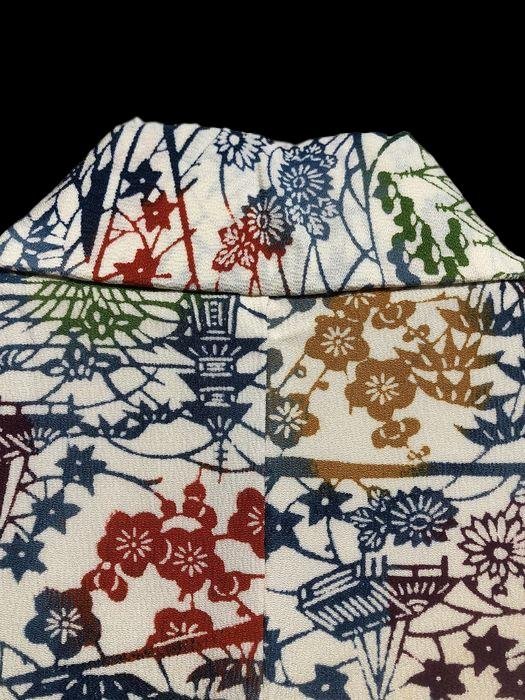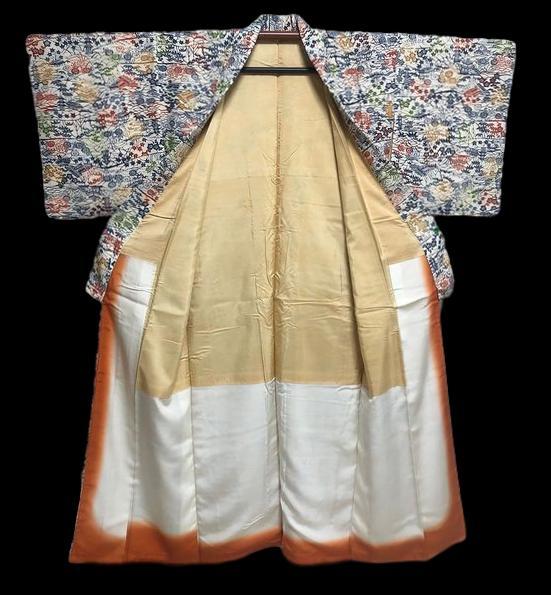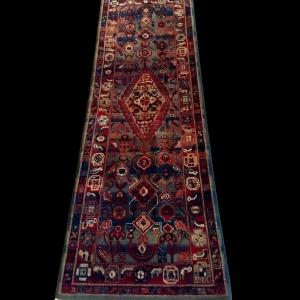The inner lining is in cream silk, and white hemmed with a coral shade.
Sizes: Length: 164 cm, width: 154 cm Japan around 1960, in very good condition.
Here, the patterns are dyed by hand or stencil (katagami), most often.
They are small and repeated regularly over the entire surface of the garment (the geometric elements of the drawings are sometimes so small and regular that, seen at a distance of 2 or 3 meters, the fabric seems to be plain).
This type of kimono is very practical and is easy to wear on a daily basis. Indeed, the choice of accessories and obi (the belt) is easier and less strict than in the case of other more dressed kimonos where everything is codified according to precise rules.
It thus leaves more room for imagination. Enhanced by an elegant obi and judiciously chosen accessories that will add an original touch to the whole, it is perfect for an outing, a friendly meeting or a theatrical evening.
An elegant well-accessorized komon is well worth an iromuji.
# On www.winsteinprovence.com you will find a large selection of kimonos for men and women, from the 1900s to the 1970s, as well as an explanation of each model.
# The dyeing techniques are numerous and offer a varied range (Edo komon, Kagakomon, Kyôkomon, bingata, sarasagata, rôketsuzome, shiborizome ...). Originally, edokomon motifs appeared on the clothing of warriors (kamishimo), and represented the fief to which they belonged, thus facilitating their identification.
From the middle of the Edo period (1603-1868), kimonos and kori-style haori became very fashionable among the common people and the variety of designs and patterns increased (stylized plants and animals , lucky elements, compositions giving rise to puns ...).














































 Le Magazine de PROANTIC
Le Magazine de PROANTIC TRÉSORS Magazine
TRÉSORS Magazine Rivista Artiquariato
Rivista Artiquariato